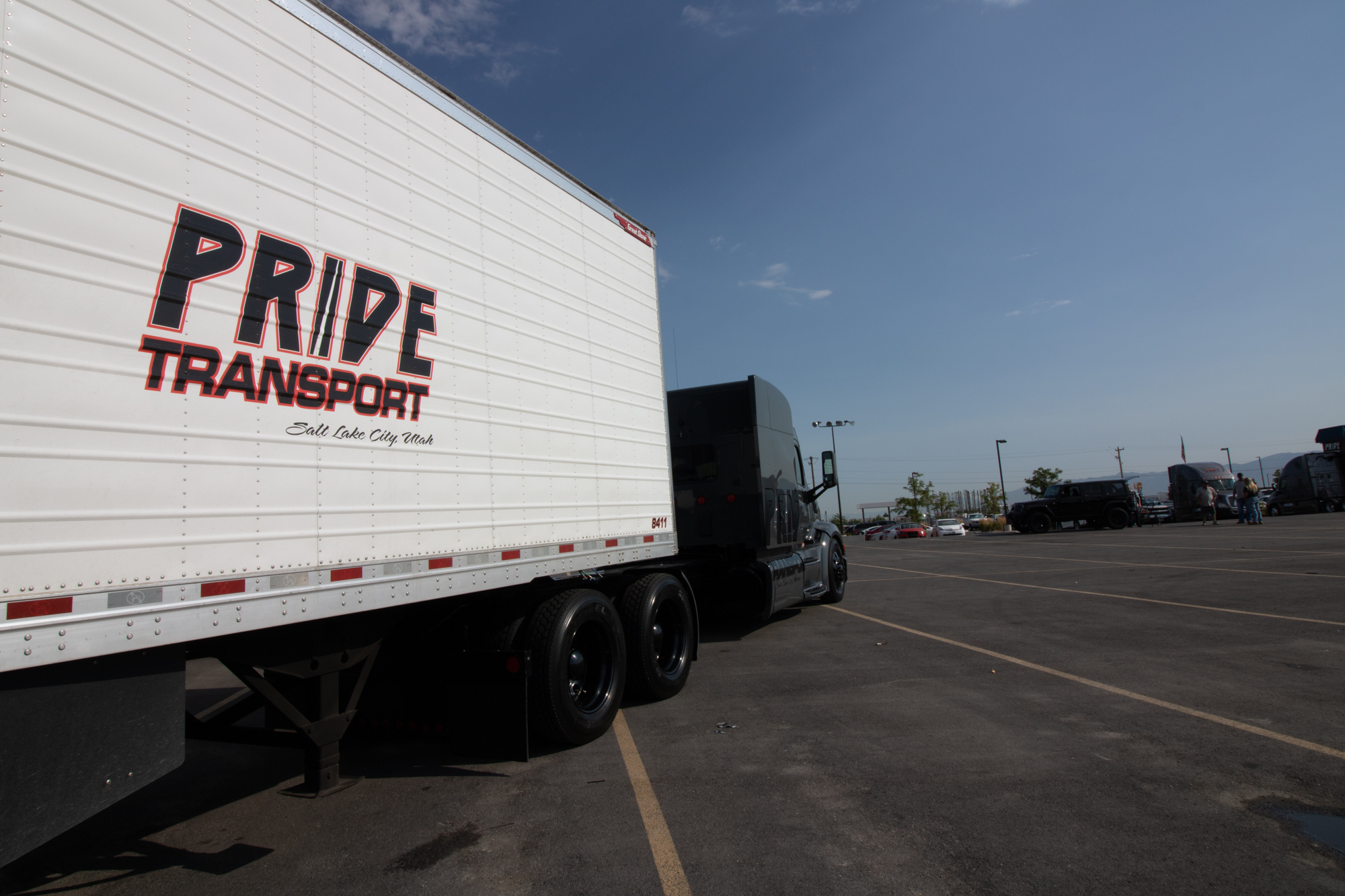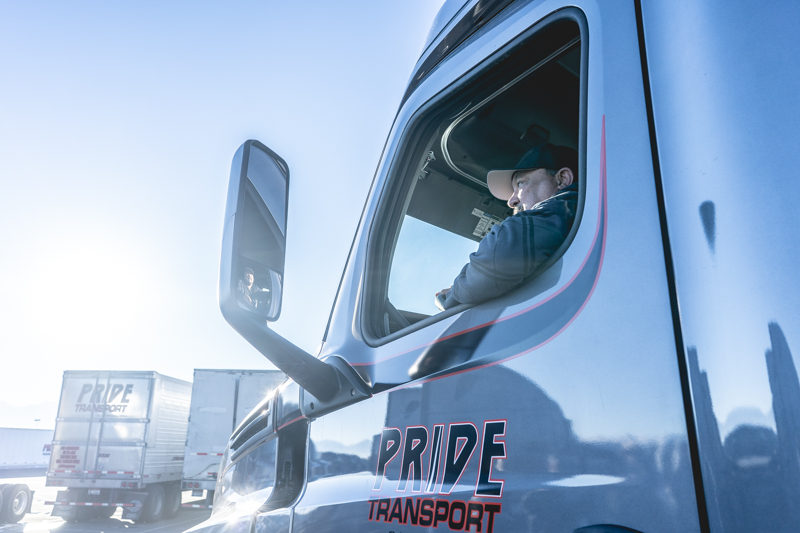by Pride Transport | Nov 21, 2024
Being a professional in almost any industry requires knowing the everyday terminology used by others in your field. Truck driving is no exception. Between communicating with other drivers, dispatchers, mechanics, and logistics coordinators, drivers have to remember a lot of different terms and acronyms to make sure everybody can do their job right and keep the entire operation running smoothly.
Understanding commonly used terms helps all drivers (but especially new ones) feel like part of the community, too. Using language as a point of connection can help you relate to other drivers and offer assistance when possible. Knowing what’s going on when conversations start up on the CB radio can help keep you safe and informed when covering long miles.
New drivers will pick up even more of the everyday language throughout their truck driving careers, but we’re here to offer a starting point for having effective conversations with members of your team.


Common Trucking Terms
Truck Parts
Air Ride Suspension - A type of suspension system in semi-trucks that uses air springs to provide a smoother ride, reducing the impact on cargo and making long hauls more comfortable for the driver.
DEF (Diesel Exhaust Fluid) - A non-toxic liquid injected into the exhaust stream of diesel engines to reduce harmful nitrogen oxide emissions (an important component of modern emission control systems).
GAWR (Gross Axle Weight Rating) - The maximum weight allowed on any one axle.
GCW (Gross Combined Weight) - The maximum weight of your tractor and trailer (with its contents) together.
Kingpin - Large pin underneath a semi-trailer that connects to the fifth wheel of the truck, locking the trailer in place and allowing for towing.
Landing Gear - The retractable legs located on the front of a semi-trailer; used to support the trailer when it's not attached to a truck. They can be cranked up or down during coupling and decoupling.
Tandem Axles - A pair of axles located close together on a semi-trailer, often used to distribute the weight of heavy loads more evenly to improve stability and handling.
Cab Technology
E-Logs (Electronic Logging Devices) - Digital systems used by truck drivers to automatically track their driving hours. They ensure better tracking accuracy and compliance with Hours of Service (HOS) regulations. Can also track truck speed and idle time. May also be referred to as electronic on-board recorder (EOBR).
Governor - Device that limits the truck’s top speed and is often used by carriers to maintain safety and efficiency standards. Also known as a speed governor or speed limiter in the industry.
Qualcomm - In-cab communication system that combines elements of GPS, weather tracking, email, and text messaging.
Sleeper Cab - A compartment located behind the driver's seat, outfitted with a bed and sometimes other amenities. Allows long-haul drivers to rest during overnight trips.
Industry Terms
BOL (Bill of Lading) - A legal document between the shipper and the carrier detailing the type, quantity, and destination of the goods being carried.
Cab Card - Issued by the registration state, this official document lists all the states your truck is authorized to operate. Drivers must keep it in the cab at all times.
FMCSA (Federal Motor Carrier Safety Administration) - Federal government agency responsible for regulating and providing safety oversight of commercial motor vehicles (CMVs).
Partners with industry, safety advocates, and state and local governments to keep the nation's roadways safe and improve CMV safety.
HOS (Hours of Service) - “The maximum amount of time drivers are permitted to be on duty including driving time, and specifies number and length of rest periods, to help ensure that drivers stay awake and alert,” as defined by the FMCSA.
OTR Driver (Over-the-road Driver) - Truck driver who travels cross-country to deliver freight and usually sleeps within a berth in the truck cab. Typically averages over 100,000 miles per year.
USDOT (U.S. Department of Transportation) - Executive department of the federal government responsible for overseeing the country’s transportation system. The FMCSA is an agency of the USDOT and sets forth regulations and laws by the department.
Driving Terminology
Blind Shipment - When the shipper and receiver are unaware of one another’s identity, typically to protect supplier confidentiality.
Bobtail - Driving a semi tractor without a trailer attached.
Doubles - Two trailers pulled by one tractor.
Triples - Three trailers pulled by one tractor.
Load Specifics
Chimney Blocking - Method of loading pallets in which they alternate between straight and turned 90 degrees. This method can help to prevent damage from cargo shifting in the trailer.
Drop and Hook - When a driver drops off a trailer at a warehouse or distribution center and hooks up to a different trailer.
Hotshot Loads - Small loads requiring quick delivery; can typically fit on a box truck or trailer.
LTL (Less Than Truckload) - Shipment that doesn’t require the entire cargo area in the trailer.
Lumper - Person hired to load and unload trailers, often at a warehouse or shipping facility.
Yard Goat - Specialized yard truck designed to move trailers within a freight terminal or warehouse yard.
Yard Jockey - Person who operates a yard truck that moves trailers within a terminal or warehouse yard to loading docks or other locations within the yard.
Types of Routes
Backhaul - Carrying cargo on a return trip, either hauling the same or different goods back over part of the same route.
Deadhead - Operating a truck without cargo between two locations.
Dedicated Run - When a driver is assigned for a single (dedicated) customer on a specific route.
Regional - A route that covers a limited geographical area, usually within a certain radius of a driver’s home or a company terminal.
(Looking for even more lingo? We created a separate guide with even more truck driver slang so you always know what your colleagues and fellow drivers are talking about.)
Get Started With Pride Transport
From terminology to federal regulations to new technology, there’s always something new to learn in trucking and transportation. That’s why we offer training and ongoing driver support at Pride Transport. Experienced drivers can even become training managers to educate the next generation of drivers and help them learn the terms that will help them successfully navigate their driving career. Join the Pride Transport family and check out our open roles today.
